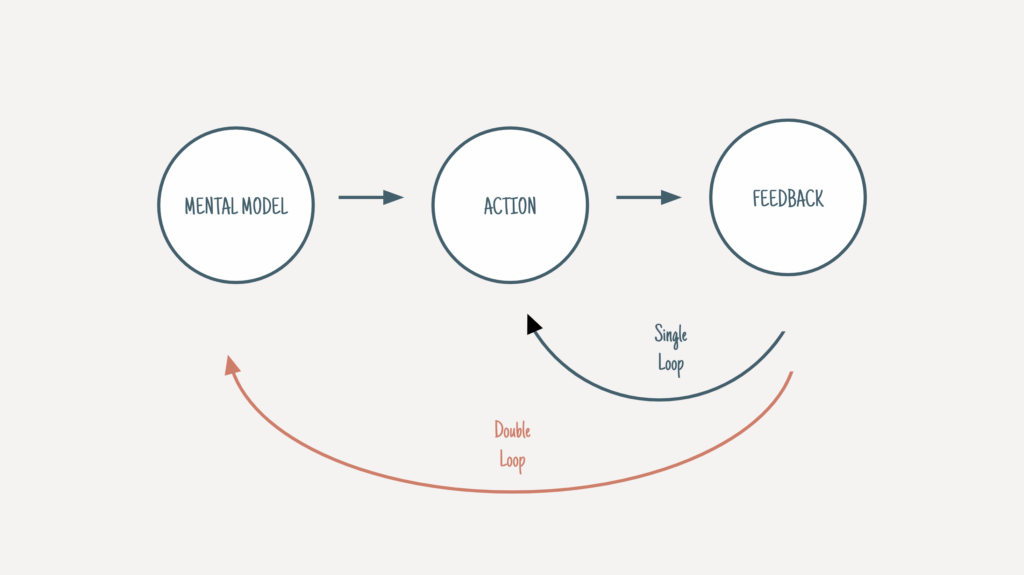It’s common to see progress as linear. When thinking about success, many people imagine a ladder or stairs going up. To progress, you need to climb each step one by one and get closer to the top. But that’s not the only model you can apply to visualize personal growth.
- Linear model: A then B then C then D.
- Circular model: A feeds B feeds C, which in turn feeds A.
In a linear model of personal growth, you can only go up or down. By design, there are people below and above yourself. This model can be falsely reassuring, as it seems to offer a clear path to success. It’s used by many organisations as a way to manage their employees’ careers.
In a circular model of growth, nobody is more advanced than anyone. There is no “up” or “down.” People are at a particular point of their own, unique growth loop. Everyone only competes against one’s self. The circular model can be more daunting, as there is no predefined direction — you need to design your own personal growth process — but it can also be infinitely more rewarding.
Designing growth loops
The circular model of personal growth is not too dissimilar from the concept of circular economy, where the goal is to make the most of resources and to create self-sustaining loops. It forces people to learn how to learn by designing feedback mechanisms that will allow them to continuously improve.
Here is an example of the circular model of personal growth applied to learning:
- Learn something new
- Write about it and share it
- Connect with new people
… and learn something new from them.
As you can see, there is no clear “winning” end goal. When using the circular model of growth, you need to fall in love with the process. Success becomes a by-product of your learning journey, and it’s all about celebrating the small wins rather than chasing a big final victory.
From single loops to double loops
Growth loops are not intrinsically good if we keep approaching the same problem with no variation of method and without ever questioning the overarching goal. This is called “single loop learning.”
A better approach is “double loop learning”, which is easily understood using the thermostat analogy from Teaching Smart People How To Learn:
“A thermostat that automatically turns on the heat whenever the temperature in a room drops below 68°F is a good example of single-loop learning. A thermostat that could ask, “why am I set to 68°F?” and then explore whether or not some other temperature might more economically achieve the goal of heating the room would be engaged in double-loop learning.”
Chris Argyris, Business Theorist and Professor at Harvard Business School.
Unlike single loop learning which is simple and static, double-loop learning is more complex and dynamic, taking into account external factors and the changes in your environment, and adjusting the mental models on which a decision depends.

Double loop learning is a model that encourages people and organisations to continuously challenge their assumptions and goals instead of blindly repeating the same loop. While the idea seems simple, it can be hard to implement double loop learning because of a natural need for control, a fear of failure, or an overall resistance to change.
Mental models are hard to change, which is why double loop learning is more challenging to implement at first, but also more rewarding.
If you’re struggling to get out of linear learning or single loop learning, try to understand the true nature of your resistance and to implement double loop learning in a small area of your life where you already feel quite comfortable.
